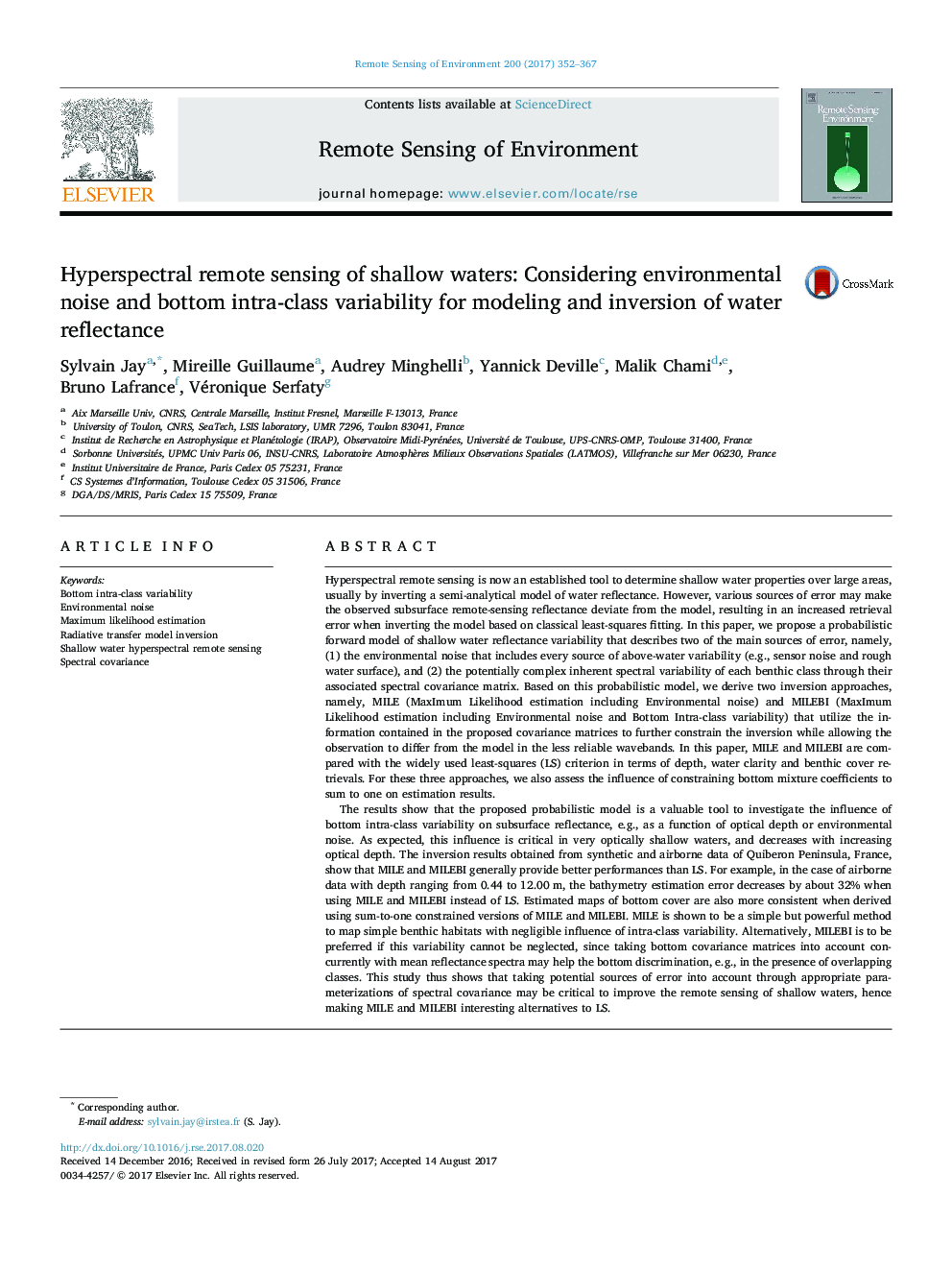| Article ID | Journal | Published Year | Pages | File Type |
|---|---|---|---|---|
| 5754741 | Remote Sensing of Environment | 2017 | 16 Pages |
Abstract
The results show that the proposed probabilistic model is a valuable tool to investigate the influence of bottom intra-class variability on subsurface reflectance, e.g., as a function of optical depth or environmental noise. As expected, this influence is critical in very optically shallow waters, and decreases with increasing optical depth. The inversion results obtained from synthetic and airborne data of Quiberon Peninsula, France, show that MILE and MILEBI generally provide better performances than LS. For example, in the case of airborne data with depth ranging from 0.44 to 12.00Â m, the bathymetry estimation error decreases by about 32% when using MILE and MILEBI instead of LS. Estimated maps of bottom cover are also more consistent when derived using sum-to-one constrained versions of MILE and MILEBI. MILE is shown to be a simple but powerful method to map simple benthic habitats with negligible influence of intra-class variability. Alternatively, MILEBI is to be preferred if this variability cannot be neglected, since taking bottom covariance matrices into account concurrently with mean reflectance spectra may help the bottom discrimination, e.g., in the presence of overlapping classes. This study thus shows that taking potential sources of error into account through appropriate parameterizations of spectral covariance may be critical to improve the remote sensing of shallow waters, hence making MILE and MILEBI interesting alternatives to LS.
Related Topics
Physical Sciences and Engineering
Earth and Planetary Sciences
Computers in Earth Sciences
Authors
Sylvain Jay, Mireille Guillaume, Audrey Minghelli, Yannick Deville, Malik Chami, Bruno Lafrance, Véronique Serfaty,
